Onion fly control methods
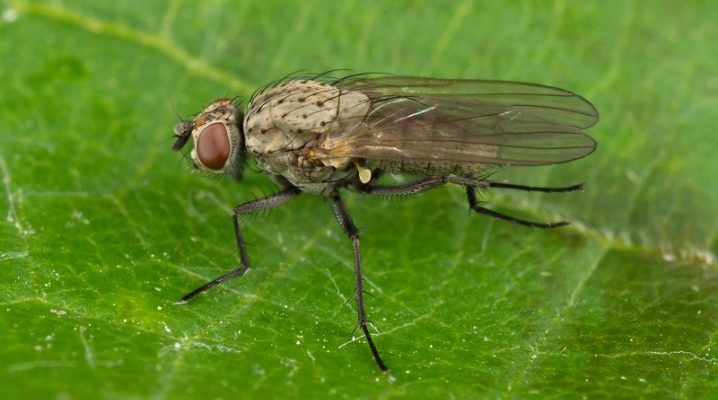
Onions usually do not cause any difficulty in growing for gardeners. This culture is unpretentious in soil and care, but pests love it very much. One of the most common parasites is the onion fly. You can learn the methods of dealing with this insect from the article.
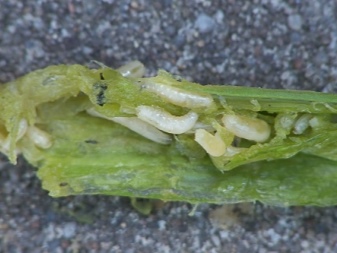
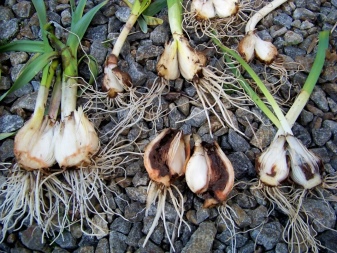
Description of the pest
The onion fly is an insect that looks like a small midge. It can be gray or yellow with a gray tint. The wings are transparent, covered with elongated hairs. The onion fly does not live long - the maximum duration of its existence is 2.5 months. The insect itself does no harm to plants. Only its larvae parasitize. The onion fly begins to fly closer to mid-May, laying clutches on foliage. Moreover, she lays eggs not only on onions, but also on garlic. After about a week, the larvae appear.
The larvae are white, their peculiarity is the absence of legs. Those that hatched from one clutch stick closer to each other, crawling into the bulbs. They feed on the plant, gnawing holes in it. After about 2–3 weeks, the larvae are buried in the ground, and the pupation process takes place there. After another two weeks, new flies appear. Thus, the crop is harmed for the whole season.
In addition, flies appear the next year, as the parasite goes to winter in the soil.
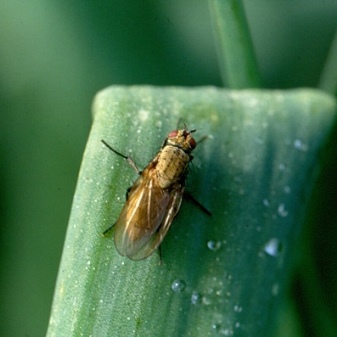

Why is onion fly dangerous?
Such an insect belongs to the class of the most common. The onion fly is dangerous because during the season it develops in several generations, continuously harming the beds. One bulb can simultaneously contain up to 50 larvae. Damage is caused not only to onions and garlic, but also to bulbous plants, such as tulips.
Crop affected by insects must not be sold or eaten. The beds with such crops emit a putrid smell. In addition, the immunity of plants is weakened, which means that other diseases or pests can completely destroy the crop.
There is also no guarantee that parasites will not pass from onions to other crops in their summer cottage. That is why the onion fly, if found, must be destroyed immediately.
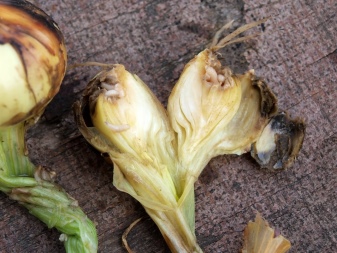
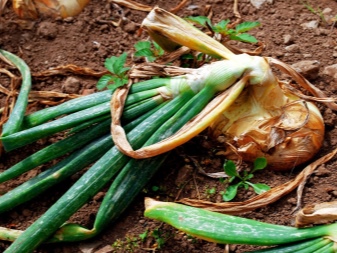
Signs of defeat
If an onion fly appears in the garden, an experienced gardener can easily understand this. The affected plant will have whitish feathers instead of green feathers. Then the white feathers turn yellow. The onion or garlic looks weak and frail, its growth and development slow down. Further, the culture begins to dry out gradually. But the main criterion is still the smell.
We have already said above that the fly lays its eggs in the foliage. Sometimes she can make masonry and on the ground. It is possible to examine the eggs only with a microscope, and therefore the larvae are found only when they are at least a week old.
If the grower suspects that the yellowing and death of the onion is not due to the onion fly, he can dig up a few of the bulbs and cut them open. The larvae will be visible immediately.
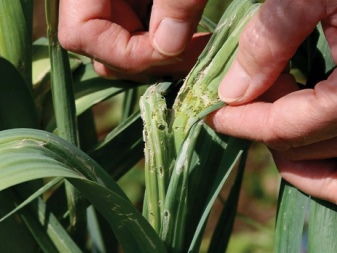
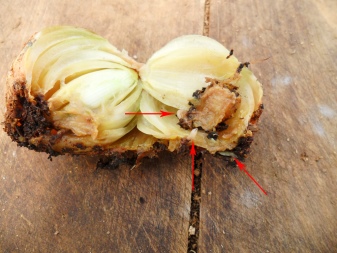
How to fight?
For many years of struggle with onion fly, gardeners have already developed a number of recipes and techniques. You can get rid of the pest with folk remedies, and it is also not forbidden to use chemicals. All options deserve consideration.
Folk ways
Folk methods of insect control do not pose a danger to either the affected plants or other crops in the garden. They are also safe for the health of others. Today, there are several effective home methods that allow you to quickly and easily defeat the parasite.
- Salt... Common table salt will help protect onion beds from pests. For 10 liters of water, take 0.25 kg of the product, stir well. The resulting composition must be properly watered. Only the soil is irrigated without affecting the feathers. Processing is carried out 14 days after onion germination. But often you cannot use salt, because this tool destroys the fertility of the soil. It will be enough once a season.
- Tobacco dust. It will be easy to get rid of onion flies with the help of tobacco dust. Onion sprouts growing in the open field will definitely not get sick if you sprinkle the soil with this product. One and a half tablespoons of the product will be needed per square meter of soil. You can sprinkle it both when a pest appears, and immediately after planting, for prevention and deterrence.
- Ash... With the help of wood ash, you can not only remove the fly, but also feed the crop. The product can be consumed in two ways. The first one should be done right at landing. To do this, pour 0.1 kg of ash into a bucket of water, mix. Further, the resulting composition is slowly poured into the landing pits. The second method involves the processing of already emerged plants. They take 0.5 kg of ash on a bucket of water, insist for 24 hours. Then the mixture can be poured over the ground or sprayed on the feathers of the plants. By the way, this method is effective not only against the onion fly, but also against the carrot fly.
- Ammonia... The strong smell of ammonia allows you to poison the fly without any problems. Not a single insect will bear such a "scent". As a rule, three tablespoons of alcohol are enough for a ten-liter bucket. The composition is applied immediately, until the ammonia has disappeared. Water carefully, only the soil. Irrigation is recommended after sunset.
- Boric acid... When an onion fly appears on the plants, such a popular remedy as boric acid will also help to save them in the shortest possible time. We take a bucket of water, add half a teaspoon of acid, a tablespoon of ammonia and three drops of iodine. After watering, the onion fly should disappear from the site.
- Kerosene... The product has a pungent odor that repels flies well. It can be used in two different ways. In the first version, take half a bucket of sand and pour 0.2 liters of kerosene there, mix. Work must be carried out with gloves, otherwise the smell from the hands will not wash off for several days. The resulting mixture is poured into the soil. The second option involves watering. Two tablespoons of the product are needed for a bucket of water.
- Tar... The proportions for such a composition are as follows: a tablespoon of tar is taken in a ten-liter bucket, and then the mixture is supplemented with 20 grams of soap in liquid form. Bulbs can be immersed in such a product just before planting.
And you can also sprinkle the already sprouted shoots with the composition.
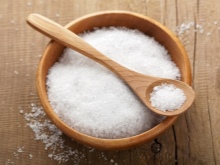
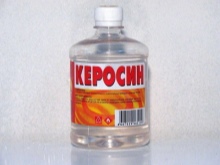

This is how the main folk methods of fighting the parasite on onions look like. However, if you wish, you can use a few more, less well-known techniques. For example, a good effect is given by vinegar... This is an economical remedy as it only takes one tablespoon for a bucket of water. The composition must be sprayed on the plantings.
Another little-known option is pine needles.... The easiest way is to simply mulch the garden with it. But you can also make an infusion. To do this, fill the bucket by a third with needles, fill it to the brim with water and insist for about 4 days. Then the product will need to be filtered. Before spraying, the concentrate will need to be diluted with water at least half.
Soap is another great insect control option. You can take household, tar or green. We grate 50 grams of the product, dilute in a bucket of liquid, spray the plants.



Chemicals
Onion beds can also be processed using chemicals. However, it is not always wise to treat plants in this way.It is better to use them if the onion fly has multiplied strongly, and folk remedies no longer take it. Also, chemistry cannot be used if harvesting is planned soon. Most of the preparations are not used if the onion is cultivated on a feather. Nevertheless, it is also necessary to consider options for such a struggle.
- Fitoverm. The best and safest insecticide. Causes paralysis of adult insects. The peculiarity of the product is that it does not accumulate in the soil, but is quickly removed from it. Therefore, the harvest will not be affected. Fitoverm must be diluted in accordance with the instructions for use. Treatments are carried out several times per season, since the drug does not act on the larvae.
- "Zemlin"... This insecticide enters the body of the onion fly the moment it feeds. The insect quickly becomes weak, can no longer reproduce, and eventually dies. For 10 square meters of land, you will need 30 grams of the drug. The insecticide is available in powder form, so it is simply scattered on the beds, then the soil is loosened. Zemlin should not be used if you plan to eat onion feathers later.
- "Alatar". A very toxic insecticide, but it can be used to cure plants in the shortest possible time. Causes mass death of pests. To make a solution, you need to stir 5 milliliters of the product in 4 liters of water. The resulting composition is enough to spray 100 sq. m of plantings. After 10 days, the treatment should be repeated.
- "Metronidazole". It is a medicinal antimicrobial drug that can be purchased over the counter. Practically harmless, which is quite rare in the case of chemicals. 4 or 5 tablets of medicine are diluted in a bucket of water, and then the onions are sprayed. The procedure is carried out once and only when the onion feathers are already strong.
- "Mukhoed"... A fairly effective dry granule product. The drug takes effect after irrigation. The poison enters plant tissues, killing larvae and adult flies. 5 grams of granules are enough per square meter of soil. Having scattered them, you need to slightly loosen the earth, and then water it. It is worth remembering that the insecticide will not work if the air temperature is more than 25 degrees. In addition, the drug is not used when growing onions on a feather.
- Inta-Vir. It is one of the best known insecticides. Only one tablet is needed for a bucket of water. The solution is used immediately after preparation by spraying it from a spray bottle. The procedure is repeated two weeks later. The latter is carried out approximately 20 days before collection, if necessary.
- Aktara. This tool will also need to be diluted in water. A gram of powder or a milliliter of liquid insecticide is taken on a bucket. Treatments are carried out twice a season. The product is not suitable for use if you want to eat feathers in the future. By the principle of action "Aktara" is very similar to "Alatar".
- "Spark". Best of all from this series of preparations is "Spark double effect". Such an insecticide not only kills insects, but also significantly increases the immunity of the onion crop. The drug tablet is stirred in a glass of heated water, and then the solution is poured into a ten-liter bucket. Treatment with the drug should be carried out three weeks before harvest.
- "Creolin"... Such a remedy is used only in the most extreme and neglected cases, if nothing else has helped. The fact is that the drug is extremely toxic. You need to use "Creolin" like this: stir two tablespoons in a bucket, and then spray it. For the first time, the plants are treated when the onion reaches a length of 0.1 m, and the second time - after 21 days.

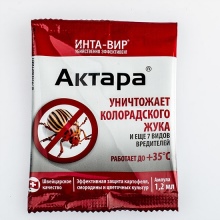
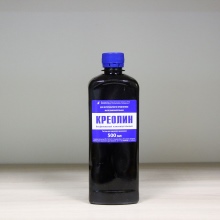
Preventive measures
It is always difficult to treat plants. Therefore, it is better not to create conditions under which they can get sick or attract pests. Simple preventive measures will help save onions, garlic and other bulbous crops.
- The easiest way is to plant the carrots next to the onions. Together, these cultures create natural defenses for each other. The same effect can be achieved if crops such as tomatoes and potatoes are planted next to onions. The nearby beds with parsley, parsnips, and marigolds will help drive the fly away from the site.
- The quality of the crop and the health of the crop as a whole depend on the condition of the planting material. It is necessary to plant only healthy, externally beautiful sets. In addition, the bulbs must be processed before planting. To do this, dissolve one gram of manganese in a liter of water. The onion is immersed in the solution for half an hour. Then it must be well dried and only then determined on the garden bed.
- Be sure to pay attention to crop rotation. Onions cannot grow in the same place for many years. The maximum term is 4 years. However, you can move the beds earlier. If there was a fly this season and you were not able to completely get rid of it, next year just plant the bow further away from the previous place.
- Plant onions and garlic in the right place. The plant will be much less likely to be attacked by pests if carrots, tomatoes and cucumbers grew on the site before it. Cabbage is also a good predecessor.
- In the fall, the beds intended for sowing onions must be dug up in the most careful way. This will get rid of most of the larvae, not only of the onion fly, but also of other insects. All plant residues from the site must be removed.
- Do not hesitate to attract beneficial insects to the site. For example, the larvae of a fly will be eaten with pleasure by a lacewing. She will fly to the planted tansy. Another useful predatory insect is the horse rider. You can attract him to the site using dill or fennel.
- The last piece of advice to give – do not delay planting onions.
The sooner you plant it, the stronger it will be at the time of the possible appearance of a pest. And it is much more difficult for any pest to cope with a culture that has excellent immunity.

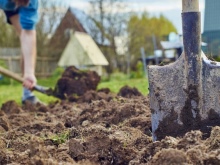














The comment was sent successfully.